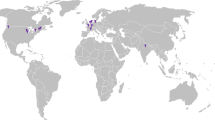Abstract
Published guidelines from the Center for Disease Control (CDC) “strongly recommended” gas sterilization or 30 minutes of high-level disinfection with either 2 percent glutaradehyde or 6 percent hydrogen peroxide following each flexible endoscope cleansing for proper care. The guidelines were proposed on the basis of previous CDC studies performed on glutaraldehyde disinfection of respiratory equipment. A prospective study was performed culturing flexible endoscopes following cannulation of the lower gastroinstestinal tract and cleansing. A uniform endoscope cleansing method without gas sterilization or high-level disinfection was used between patients. Thirty aerobic and 30 anaerobic RODAC bacterial culturings revealed no obligate anaerobic organism growth and only sparse, aerobic, environmental and cutaneous organism growth. These were no instances of documented or suspected postendoscopy infectious complications. Our results indicate that high-level disinfection and gas sterilization of flexible endoscopes are not necessary to prevent bacterial disease transmission from patient to patient.
Similar content being viewed by others
References
CDC guidelines on infection control. Infect Control 1981;2:138–44.
Matteucci DJ, Organ CH, Dykstra M, Zalasney B, Jenkins H. Identification and quantification of lower gastrointestinal flexible endoscopic microflora. Dis Colon Rectum 1983;26:499–502.
Lennette EH, Balows A, Hausler, WJ Jr, Truant JP, comps. Manual of clinical microbiology. 3rd ed. Washington: American Society for Microbiology, 1980:266–9.
Guidelines for cleaning and disinfection of flexible fiberoptic endoscopes (FFE) use in GI endoscopy. AORN J 1978;28: 907–10.
Silvis SE, Nebel O, Rogers G, Sugawa C, Mandelstam P. Endoscopic complication: results of the 1974 American Society for Gastrointestinal Endoscopy survey. JAMA 1976;235:928–30.
Pfeifer M. Cleaning, disinfection and sterilization of endoscopes. Soc Gastrointest Assist J 1978;1:29–30.
Vennes JA. How significant are endoscopically related infections? Gastrointest Endoc 1979;25:78–9.
Bond WW, Fevero MS, Mackel DC, Mallison GF. Sterilization or disinfection of flexible fiberoptic endoscopes. AORN J 1979;30: 350–2.
Coller J. Direct communication. Instrument and procedure safety committee. Society of American Gastrointestinal Endoscopic Surgeon (SAGES) 1981.
Lawyers predict new CDC guidelines will become standard of care. Hosp Infect Control 1981;8:73–5.
Chang FM, Sakai Y, Ashizawa S. Bacteral pollution and disinfection of the colonofiberscope: II. Ethylene oxide gas sterilization. Am J Dig Dis 1973;18:951–8.
Vennes JA, Geenen JE, Papp JP, Schapiro M. Endoscopically related infections and their prevention. Gastrointest Endosc 1981;27:239–40.
Vennes J. Colonoscopy techniques. In: Hunt R, Waye J. eds. Instrumentation and disinfection. 1st ed. London: Year Book Medical Publishers, 1971:39–50.
Taylor LJ. Endoscopy disinfection workshop. J Infect Control Nurs Times 77(suppl):12,15.
Gerding DN, Peteson LR, Vennes JA. Cleaning and disinfection of fiberoptic endoscopes: evaluation of glutaraldehyde exposure time and forced-air drying. Gastroenterology 1982;83:613–8.
Sakazaki R. Bergey's manual of determinative bacteriology. In: Buchanan RE, Gibbons NE, eds. Family I. Enterobacteriaceae. 8th ed. Baltimore: Williams and Wilkins, 1974:324–5.
Monroe PW, Tift WL. Bacteremia associated withenterobacter sakazakii (yellow-pigmentedEnterobacter cloacae). J Clin Microbiol 1979;10:850–1.
Birnie GG, Quibley EM, Clements GB,Follet EA, Watkinson G. Endoscopic transmission of hepatitis B virus. Gut 1983;24:171–4.
Villa E, Pasquinelli C, Rigo G., et al. Gastrointestinal endoscopy and HBV infection: no evidence for a causal relationship. A prospective controlled study. Gastrointests Endosc 1984;30:15–7.
Ayoola EA. The risk of type B hepatitis infection in flexible fiberoptic endoscopy. Gastrointest Endosc 1981;27:60–2.
O'Connor HJ, Axon AT. Gastrointestinal endoscopy: infection and disinfection. Gut 1983;24:1067–77.
O'Connor HJ, Axon AT. Disinfecting endoscopes used on hepatitis B carriers. Lancet 1984;1:631.
Conte JE Jr, Hadley WK, Sande M. Infection-control guidelines for patients with acquired immunodeficiency syndrome (AIDS). N Engl J Med 1983;309:740–4.
Author information
Authors and Affiliations
About this article
Cite this article
Matteucci, D.J., Organ, C.H., Dykstra, M. et al. Efficacy of a simplified lower gastrointestinal flexible endoscope cleaning method. Dis Colon Rectum 28, 653–657 (1985). https://doi.org/10.1007/BF02553442
Issue Date:
DOI: https://doi.org/10.1007/BF02553442




